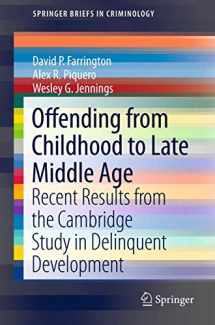
Offending from Childhood to Late Middle Age: Recent Results from the Cambridge Study in Delinquent Development (SpringerBriefs in Criminology)
Book details
Summary
Description
Offending from Childhood to Late Middle Age is a timely volume by leading researchers in Life Course Criminology, which reports new findings from The Cambridge Study in Delinquent Development, a prospective longitudinal survey of 411 South London males first studied at age 8 in 1961. The main aim of the study is to advance knowledge about criminal careers up to age 56. At the time of these most recent findings, forty-two percent of the males were convicted, with an average ten-year conviction career. Only seven percent of the males accounted for half of all convictions. Almost all of the males (93 percent) reported committing an offense in four age ranges, compared with 29 percent who were convicted at these ages. There were on average of 39 self-reported offenses per conviction. Group-based trajectory analyses indicated that, while there were distinct groups of offenders who followed different age-crime trajectories between ages 10 and 56, five groups best characterized the criminal careers of the men, with two groups, high adolescence peak and high rate chronic, exhibiting the most offending. Also, the offending trajectories were predicted by individual and environmental childhood risk factors, with the most chronic offenders (to age 56) having the most extreme scores on childhood risk. Based on these results, risk assessment instruments could be developed and risk-focused prevention could be implemented in early childhood, including parent training, pre-school intellectual enrichment programs and home visiting programs, in order to prevent chronic styles of offending from being initiated. This work will be of interest to researchers in criminology and criminal justice, especially those with an interest in life course criminology and crime prevention, while also being of use as a research framework for other studies. It will also be of interest to researchers in sociology, psychology, and other social sc


We would LOVE it if you could help us and other readers by reviewing the book
Book review



